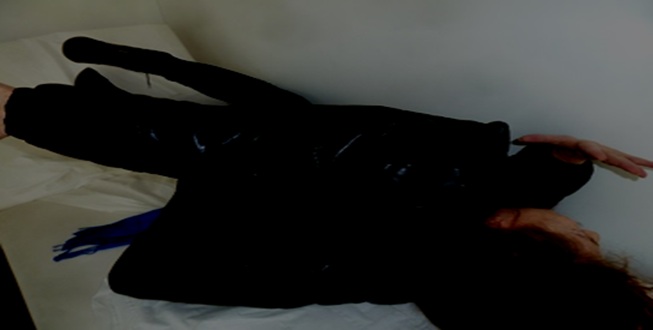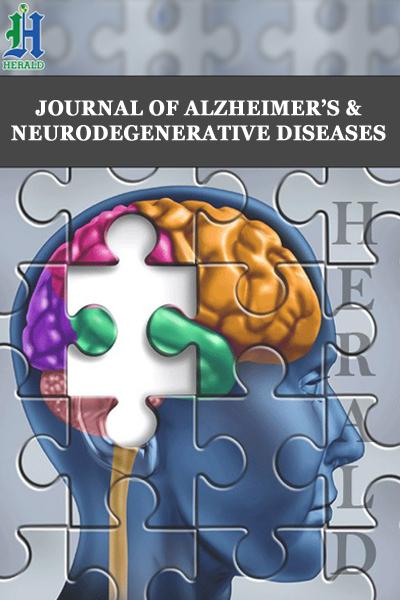
Ehlers-Danlos, Proprioception, Dystonia, Dysautonomy, L-Dopa and Oxgenotherapy’s Efficacy
*Corresponding Author(s):
Claude HamonetOccupational Therapy Institute, University Paris-Est-Creteil, 61 Avenue Du Général De Gaulle, 94010 Créteil, France
Abstract
Ehlers-Danlos syndrome, described in 1891 by Tschernogobow in Moscow, then in 1900 by Ehlers in Copenhagen, has remained in oblivion and is almost never diagnosed. Consequences are serious: therapeutic accidents, systematic transmission, removal of children’s custody from the parents because of false accusations of violence and no prescription of effective treatment. However, EDS treatments are particularly efficient on two symptoms, consequences of the generalized dysproprioception that characterizes this disease: dystonia and Dysautonomia. A 25-year experience with 5,900 patients diagnosed with Ehlers-Danlos syndrome (EDS) allowed us to observe their efficacy in this complex, variable pathology, which is resistant to usual treatments.
Keywords
Ehlers-danlos; Pathophysiology; Clinical diagnosis; Dystonia; Dysautonomia; L-dopa; Oxygen therapy; Treatments
INTRODUCTION
Ehlers-Danlos syndrome (EDS) was described by two dermatologists, in 1891 Alexander Nicolai Tschernogobov [1] in Moscow, then, in 1900, Edward Lauritz Ehlers in Copenhagen [2], by grouping together signs that have been confirmed by the physicians who succeeded them. Yet EDS has been forgotten and is still very rarely diagnosed. It was not until the 1960s with Mckusick in John Hopkins Hospital in Baltimore [3,4] followed, in the last thirty years, by Rodney Grahame in London [5], by Antonio Bulbena in Barcelona [5] and by Daniel Manicourt in Louvain [6], that a clinical description, both complete and specific enough to allow EDS identification as soon as the first symptoms appear, was achieved. Assisted by epidemiologists and statisticians, from a cohort of 5,900 Ehlers-Danlos patients followed for 25 years, we can diagnose this disease by clinic only with a fidelity of over 99% [7]. Its hereditary character is demonstrated by the discovery of identical cases in the family [6]. Recently described clinical manifestations include proprioception [8], dystonia [9], dysautonomia [10]. Initial descriptions are strongly marked by the demonstration of joint hyperlaxity. with the use of a joint rating test limited to a few joints that are not the most functionally important: the Beighton’s test [11]. It is very often faulted and misinterpreted, because of pain but also lack of training in clinical measurement, even with goniometer (rarely used), of doctors who practice it. Moreover, musculotendinous contractions of thighs’ posterior muscles, legs and feet’s soles are not taken into account.
PROPRIOCEPTION AND EHLERS-DANLOS SYNDROME
Due to changes in tissue texture, bodily sensations from internal or external sensors fail or are distorted and misleading. The body is perceived as silent, "empty". It appears as "foreign", "it does not obey", “it cannot be trusted”. Many patients perceive it as external to themselves. This dysproprioception is the key to understanding the mechanism of postural and motor manifestations of Ehlers-Danlos syndrome [12], but also pain from hypersensoriality. Thus, the constant and misleading dysproprioception of Ehlers-Danlos' disease finds explanations, beyond Charles Scott Sherrington's model [13], in the Alain Berthoz’s new neurophysiological conceptions of proprioception [14] intricating thought and movement.
Clinical signs that allow the diagnosis are the expression of this dysproprioception and tissue fragility: Diffuse pain, intense fatigue, difficulties in controlling movements with awkwardness, thin and fragile skin, joint hyperlaxity, joint instability, bruising and hemorrhagic tendency, hyperosmia, and gastric reflux. The presence of five of them is enough to affirm the diagnosis [15].
EHLERS-DANLOS SYNDROME AND DYSTONIA
Dystonia is not always easy to identify through interrogation. The patient who, since his early childhood, has been used to these involuntary movements or «muscular twitches", consider them as "normal". These contractions can be observed in the face, shoulders, neck, limbs, sometimes triggered by a sensation of pain (injection for example). Elsewhere, it is a resting tremor or jerky movements. These signs are sometimes discreet, but they have an important meaning: it is a symptom of a more diffuse motor disorder, often invisible, as an iceberg of which we only see the tip. Deep muscle contractions are at the origin of pain, sometimes evolving by seizures and can turn into violent contractions of the extremities with difficulty in stretching out the fingers especially during writing or using a computer keyboard ('writer’s cramp'). Spectacular crises of diffuse tonic muscular rigidity can be observed. There is no clonic shaking unlike epileptic seizures. These uncontrolled loose movements can be jerky as in this young patient who suddenly began to "move alone", according to her own expression, by alternating, in a sitting position, wide movements of flexion-extension of the trunk that occurred at any time, in class or during medical consultation. The frequency of these signs of dystonia is significant, greater than 50% in adults and probably underestimated. The probable mechanism of this Parkinsonian syndrome is, most likely, one of the manifestations of proprioceptive disorder. Centers controlling automatic motility receiving inappropriate signals have this type of response. Advised by a neurologist familiar with Parkinson's disease, we started to use [16] Amantadine, replaced, because more effective, by L-Dopa in two doses, an extended-release tablet in the morning successfully. Adverse effects are rare, especially digestive. In some forms of dystonia with contractures and triceps’s retraction, we have been led to prescribe botulinum toxin.
Oxygen therapy seems one of the most effective treatments (migraines, fatigue, cognition, sleep, anxiety) in Ehlers-Danlos syndrome [17] is also effective on dystonia, especially during great crises as we have been able to demonstrate with the patient represented here. Oxygen supply is 3 to 5 liters per minute for an adult, every day in sessions of 20 minutes, repeated as needed (Figure 1).

Figure 1: Ehlers-Danlos: Generalized dystonic crisis.
EHLERS-DANLOS AND DYSAUTONOMIA
Dysautonomia proceeds from the same causes: malfunctioning sensors informing about blood pressure, heart rate, temperature regulation (sweating, cold feet, coldness ...). It also affects the digestive tract: false roads, swallowing difficulties, gastro-esophageal reflux, bloating, and constipation sometimes alternating with diarrhea. It finds its explanation in the anarchy of information sent by the sensors involved in the digestive system’s physiological control. Intestinal distention evokes the possibility that the large number of micro-organisms constituting these patients’ microbiota could also play a role. Postural orthostatic tachycardia syndrome (POTS) is one of the frequent manifestations in Ehlers-Danlos syndrome associating, at the time of verticalization or movement (rotation) of the body: vertigo, tachycardia, sensation of malaise and "weakness" of the lower limbs with, sometimes, fall. The role of blood pressure is crucial here. The fact that it is low at rest makes you dread this type of episode and leads to prescribing fludrocortisone acetate. Wearing compression garments and maintenance of physical activity help to offset the effects of autonomic dysfunction by improving proprioception and blood circulation, particularly at the muscular level. Medications (betablockers, especially Bisoprolol) play a positive role against tachycardia attacks. Solifenacine, which reduces bladder hyperactivity, is effective during pollakiuria attacks with urgent cravings and urinary leakage. It also acts on sweat attacks that are often very abundant and uncomfortable. Oxygen therapy compensates for oxygen transfer deficit that is at the origin of generalized tissue hypoxia and has positive effects on dysautonomia’s consequences.
DISCUSSION
Proprioceptive disorders are at the origin of EDS clinical manifestations. This is the case for dystonia and dysautonomia. Their highlighting makes it possible to thwart many diagnostic pitfalls with their sometimes-disastrous therapeutic consequences. Misdiagnosis of epilepsy with tonic seizures with anti-epileptic therapy despite absence of electroencephalographic signs and treatment with side effects, transient stroke with antiplatelet therapy exposing to hemorrhagic accidents, suspicion of somatization and hysteria, usually translated by: "it's in the head" with the usual therapeutic consequences and social exclusion, school in particular.
Knowledge of the proprioceptive mechanism of dystonia and dysautonomia has opened new therapeutic perspectives in a disease where they were practically absent or unsuitable. The main difficulty is to fight medical prejudices to come to behavioral changes. The large number of patients who have responded positively, at least partially, to the treatments is the best incentive to share information and best practices.
CONCLUSION
Ehlers-Danlos syndrome is undoubtedly the most common inherited collagen disease [18]. It appears, therefore, probably as an important and "invisible" (according to the term used by our patients) cause of disability and social exclusion. However, continues to be described as a rare disease mainly by geneticists. This paradoxical situation makes Rodney Grahame (University of London) say: "It is incomprehensible that most physicians, specialists or not, do not track, do not know how to diagnose, or, of course, how to treat it. Many even deny its existence, often leading the patient and his family into dramatic and unnecessary suffering" [19]. This denial leads to false accusations of parents' violence against their children when observing bruises and spontaneous fractures related to the great fragility of the tissues. This situation leading to taking away children’s custody and parents ‘condemnation has just been the subject of an international conference near Paris [20]. The development of very characteristic signs such as dystonia and dysautonomia will help to better diagnose, but also better treat patients, using proven symptomatic treatments such as L-Dopa and Oxygen.
REFERENCES
- http://www.gersed.com/images/doc-technique/bibliographie/lmed-09-2018-05-daens.pdf
- https://www.biusante.parisdescartes.fr/sfhm/hsm/HSMx2016x050x001/HSMx2016x050x001x0029.pdf
- Grahame R, Bird HA, Child A (2000) The revised (Brighton 1998) criteria for the diagnosis of benign joint hypermobility syndrome (BJHS). J Rheumat 27: 1777-1779.
- http://garfield.library.upenn.edu/classics1979/A1979HZ23400001.pdf
- Bulbena A, Pailhez G, Bulbena-Cabré A, Mallorquí-Bagué N, Baeza-Velasco C (2005) Joint hypermobility, anxiety and psychosomatics: Two and a half decades of progress toward a new phenotype. Adv Psychosoma Med 34: 143-157.
- Hamonet C, Brock I, Pommeret ST, Pommeret S, Baeza C. et al. (2017) Syndrome d’Ehlers-Danlos (SED) type III (hypermobile): validation d’une échelle clinique somatosensorielle (ECSS-62), à propos de 626 cas Ehlers-Danlos Syndrome type III (hypermobile): Clinical somatosensory scale (SSCS-62) validation, about 626 patients, Bull Acad Natle Méd 201: 405-415.
- https://rarediseases.org/event/international-symposium-ehlers-danlos-syndromes/
- Bulbena A, Baeza-Velasco C, Bulbena-Cabre A, Pailhez G, Critchley H, et al. (2017) Psychiatric and psychological aspects in the Ehlers-Danlos syndromes. Am J Med Genet Part C Semin Med Genet 175: 237-245.
- Hamonet C, Ducret L, Marié-Tanay C, Brock I (2016) Dystonia in the joint hypermobility syndrome (a.k.a. Ehlers-Danlos syndrome, hypermobility type). SOJ Neurol 3 : 1-3.
- Bravo JF (2016) Dysautonomia in Ehlers-Danlos type III. Journal de réadaptation médicale: Pratique et formation en médecine physique et de réadaptation 36 : 53-55.
- The Ehlers-Danlos Syndrome (1970) William and Hellemann Medicine books Ltd.
- Hamonet C, Vlamynck E, Haidar R, Bonny C, Mazaltarine G (2016) Ehlers-Danlos type III. From physiopathology to therapeeutic. Journal de Réadaptation médicale 36: 32-37.
- https://liberationchiropractic.com/wp-content/uploads/research/1906Sherrington-IntegrativeAction.pdf
- Alain Berthoz (1997) Le sens du mouvement, Odile Jacob, Paris.
- Hamonet C, Brissot R, Anne Gompel A, Baeza-Velasco C, Guinchat V, et al. (2018) Ehlers-Danlos Syndrome, contribution to clinical diagnosis about 853 cases. EC neurology10: 6.
- Hamonet C, Cesaro P (2014) Ehlers-Danlos and dystonia. Positive effect of amantadine. Presse Med 43 : 1017-1018.
- Hamonet C, Vienne M, Leroux C, Letinaud MP, Paumier J, et al. (2016) Respiratory manifestations in d'Ehlers-Danlos syndrome (EDS). New treatments options. Journal de réadaptation médicale 36: 56-61.
- Tinkle B, Castori M, Berglund B, Cohen H, Grahame R, et al. (2017) Hypermobile syndrome (a.k.a. Ehlers-Danlos type III and Ehlers-Danlos syndrome hypermobility type): Clinical description and natural history. Am J Med Genet C Semin Med Genet 175: 48-69.
- Grahame R (2018) Ehlers-danlos. The forgetten disease by Medicine” Claude Hamonet. L'Harmattan 2019 Paris.
- https://gersedbelgique.com/2019/09/30/5eme-colloque-international-sur-la-maladie-dehlers-danlos-a-paris-organise-par-le-professeur-claude-hamonet-26-10-2019/
Citation: Hamonet C, Ducret L (2019) Ehlers-Danlos, Proprioception, Dystonia, Dysautonomy, L-Dopa and Oxgenotherapy’s Efficacy. J Alzheimers Neurodegener Dis 5: 031.
Copyright: © 2019 Claude Hamonet, et al. This is an open-access article distributed under the terms of the Creative Commons Attribution License, which permits unrestricted use, distribution, and reproduction in any medium, provided the original author and source are credited.

